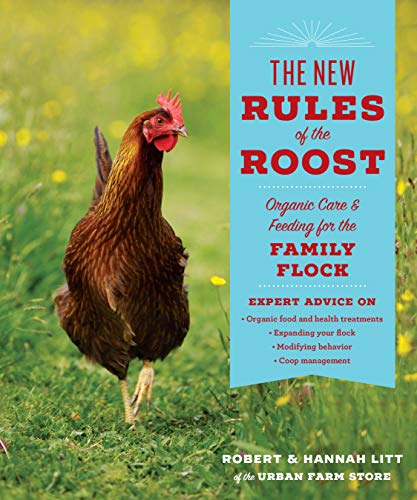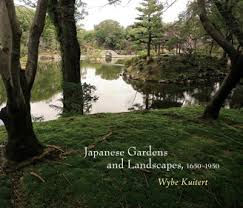 Marietta and Ernie O’Byrne are very clear about their gardening goals. They are not interested in low-maintenance gardening “with orderly shrubs, surrounded by chipped mulch, and plants that don’t touch,” but neither do they care for plant thugs that dominate their neighbors. To achieve these ends, much maintenance is required and they relish this work. “A Tapestry Garden: The Art of Weaving Plants and Place” captures these ideals as they have been expressed in their two acres of gardens on a farm in Eugene.
Marietta and Ernie O’Byrne are very clear about their gardening goals. They are not interested in low-maintenance gardening “with orderly shrubs, surrounded by chipped mulch, and plants that don’t touch,” but neither do they care for plant thugs that dominate their neighbors. To achieve these ends, much maintenance is required and they relish this work. “A Tapestry Garden: The Art of Weaving Plants and Place” captures these ideals as they have been expressed in their two acres of gardens on a farm in Eugene.
The O’Byrnes are famous for their hellebores, so I wasn’t surprised to read about their woodland gardens with profiles of shade loving favorites, including trilliums, arisaemas, and podophyllum. But I didn’t know they had large swaths of sun, too. These includes a riotous summer perennial border (a “full-flowered buxomness of leaning, mingling, sprawling growth”) and a chaparral garden, that recreates the look of the southwest, albeit with plants that can survive a Pacific Northwest wet winter and spring.
In reading this latter chapter, I was reminded of the books by Beth Chatto, especially “The Gravel Garden” (2000), one of my favorite all-time gardening books. The O’Byrnes are not afraid to experiment. The writing (primarily in Marietta’s voice) recounts all the successes and failures in a matter-of-fact way and quietly expounds their right place, right plant philosophy throughout their several garden settings and microclimates.
Both Marietta and Ernie grew up loving nature. Both had college degrees in biology and worked together in their own landscape management company for much of their careers, but when it came to their own garden, they made plenty of horticultural mistakes, especially in the early years. While this at first seems like a book for the gardening elite, I encourage beginners to give it a read. You will be amused by the authors’ misfortunes and encouraged to shrug off your own failures and try again.
As they spent more and more time in their own garden, the authors eventually curtailed some of the maintenance business to start their own nursery. This latter continues today as a wholesale business exclusively selling hellebores. A chapter highlights the beauties they have developed, especially the Winter Jewels series, with stunning photographs. This book also includes a very helpful chapter on their maintenance practices, and maps of the garden inside both covers, in case you get lost during the written tour.
The O’Byrnes even sleep in their garden, enjoying the night fragrances of their summer, sunny perennials and the hummingbirds and other pollinators that are on wing at first light. Their plant palette is very broad, including many natives but also challenging-to-grow plants from around the world. Many of these are grown from seed – often there is no other way to obtain these plants. They have decided, “harmonious chaos is possible in a garden, with denizens from multitudes of countries of origin. Would that we humans could be as comradely as is the diverse plant world here represented.”
Excerpted from the Fall 2018 Arboretum Bulletin.
 Holden Village is a Lutheran community center deep in the Cascade Mountains, accessible only by a boat ride on Lake Chelan followed by a bus ride on a mountain road. At 3,000 feet, it is very cold and snowy in the winter, and cut off from Wi-Fi and cell phone reception.
Holden Village is a Lutheran community center deep in the Cascade Mountains, accessible only by a boat ride on Lake Chelan followed by a bus ride on a mountain road. At 3,000 feet, it is very cold and snowy in the winter, and cut off from Wi-Fi and cell phone reception. In “Visionary Landscapes,” Kendall Brown profiles the lives and gardens of five designers born in the mid-20th century – three in Japan, two in the United States – who have practiced their craft primarily in North America. The new gardens they have designed, mostly in the last 30 years, are pushing the evolving concept of Japanese-style gardening.
In “Visionary Landscapes,” Kendall Brown profiles the lives and gardens of five designers born in the mid-20th century – three in Japan, two in the United States – who have practiced their craft primarily in North America. The new gardens they have designed, mostly in the last 30 years, are pushing the evolving concept of Japanese-style gardening.![[The Japanese Garden] cover](https://depts.washington.edu/hortlib/graphix/JapanesegardenWalker.jpg)
![[An Orchard Odyssey] cover](https://depts.washington.edu/hortlib/graphix/orchardodyssey.jpg)
 Robert and Hannah Litt of Portland wrote A Chicken in Every Yard, published in 2011. They regard their chickens as pets to pamper and keep safe – they only eat their eggs. This book will tell you how to do the same.
Robert and Hannah Litt of Portland wrote A Chicken in Every Yard, published in 2011. They regard their chickens as pets to pamper and keep safe – they only eat their eggs. This book will tell you how to do the same. Wybe Kuitert has written two deeply researched books on the history of Japanese gardens. The first, “Themes in the History of Japanese Garden Art” (1st edition 1988, revised 2002 – this later edition is at the Miller Library), is the history from roughly 900 to 1650 CE, concluding when “the practice and theory of garden art became established in a way that does not differ much from our own days.”
Wybe Kuitert has written two deeply researched books on the history of Japanese gardens. The first, “Themes in the History of Japanese Garden Art” (1st edition 1988, revised 2002 – this later edition is at the Miller Library), is the history from roughly 900 to 1650 CE, concluding when “the practice and theory of garden art became established in a way that does not differ much from our own days.”![[The Bee Tree] cover](https://depts.washington.edu/hortlib/graphix/beetree.jpg)
![[Butterflies of the Pacific Northwest] cover](https://depts.washington.edu/hortlib/graphix/butterfliesofthepacificnorthwest.jpg)